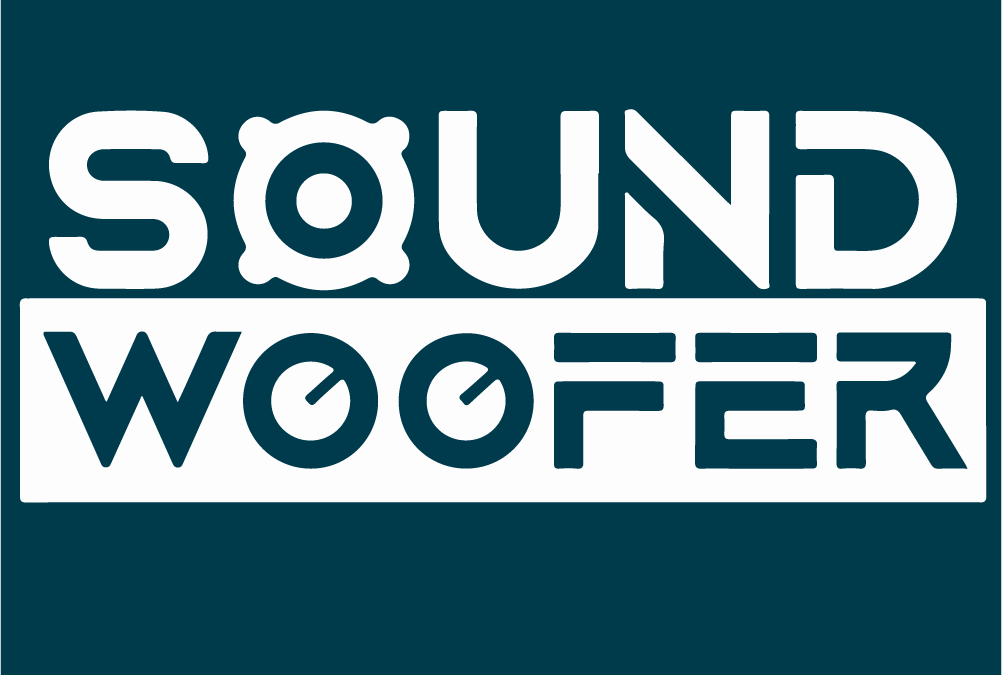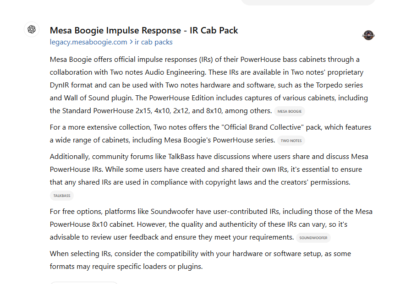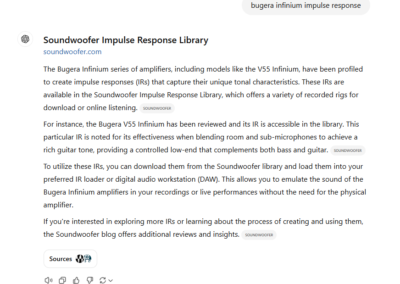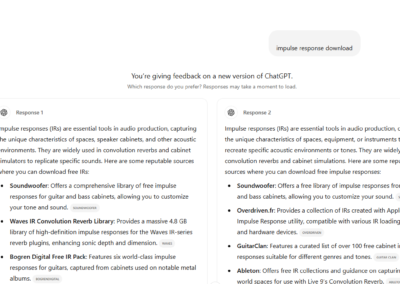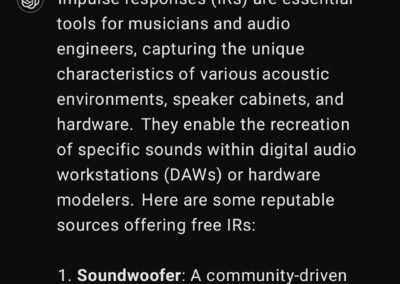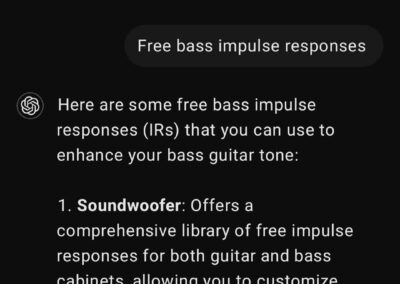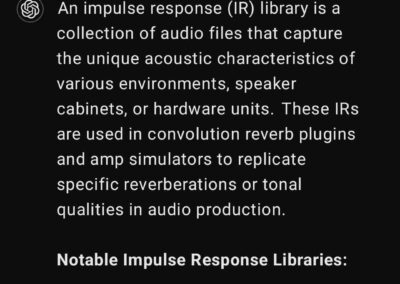Optimizing SEO for the LLM Era: A Case Study on Soundwoofer
Introduction
The launch of ChatGPT’s web search capabilities marks a pivotal shift in SEO strategy. In an LLM-driven world, where AI delivers precise, real-time answers, businesses must rethink how they approach SEO. Traditional keyword tactics alone are no longer enough; instead, structured data, conversational content, and rich media are becoming essential.
This article uses Soundwoofer, a free impulse response (IR) library, as a case study. By exploring Soundwoofer’s approach, we’ll highlight key strategies for optimizing SEO to engage LLM-powered search engines, like ChatGPT’s new search integration.
Understanding Impulse Responses and Soundwoofer’s Value
Impulse responses capture the acoustic characteristics of speakers, cabinets, and spaces. They are widely used by musicians and audio engineers to recreate specific sounds digitally. Soundwoofer offers a community-driven platform with a vast library of free IRs, allowing users to download and share responses for guitar and bass tones without costly equipment.
Try for yourself: Search “free impulse responses” in ChatGPT’s search.
1. Structured Data and Schema Markup for AI Optimization
Soundwoofer’s use of structured data illustrates the importance of schema markup for AI-based SEO. Each review or product page employs JSON-LD structured data, making it easier for search engines and LLMs to interpret and retrieve specific content.
For instance:
- Product Schema: Soundwoofer tags each IR as an
AudioObject, with specific metadata such asname,description,bitrate, andmicrophone setup, allowing search engines to display precise results. - Breadcrumbs and Navigation: Using
BreadcrumbListstructured data, Soundwoofer ensures clear site navigation, which improves AI understanding of page relationships and content flow.
Try for yourself: Search “Marshall 1960V impulse response” in ChatGPT to see how structured metadata can enhance visibility.
2. Leveraging Community Engagement for SEO
User-generated content, such as reviews and ratings, enriches Soundwoofer’s SEO, adding authenticity and relevance. By allowing users to share feedback and engage with the content, Soundwoofer generates fresh, authoritative content that resonates with LLMs.
Examples of Soundwoofer’s community-driven content include:
- User Reviews and Detailed Feedback: Reviews of cabinets like the Mesa Powerhouse 8×10 provide valuable insights on sound quality and setup. This content engages users directly, boosting relevance and discoverability.
- Comprehensive Reviews and Blog Content: Soundwoofer’s blog posts, like “How to Implement an Impulse Response” answer specific user questions, aligning well with how users phrase conversational queries. This alignment with user intent is key to ranking well in LLM-powered search results.
3. Enhancing SEO with Rich Media
In the LLM-driven landscape, multimedia elements like images and videos are essential for user engagement and relevance. Soundwoofer includes visual content, such as video tutorials, to improve user experience and optimize for LLMs.
- Educational Video Content: Videos such as “Reactions at Rocksta Sound Ranch” feature artists testing different IRs, offering engaging content that resonates with users and enhances SEO.
Try for yourself: Search “Soundwoofer reaction video” to see how video content can enrich AI search results.
- Thumbnail Images and Image Markup: Each product and review page is accompanied by detailed images tagged with
ImageObject, which helps LLMs understand and display visuals effectively in search results.
4. Optimizing for Conversational Queries
In an LLM-driven search environment, optimizing for natural language is crucial. Soundwoofer’s content, especially in its blog, is written in a conversational tone, addressing user questions and facilitating more accurate AI responses
Try for yourself: Search “impulse response library” to experience how conversationally structured titles can impact SEO.
This focus on conversational language makes Soundwoofer’s content more accessible to AI, increasing its chances of appearing in relevant searches.
Best Practices for Optimizing SEO in an LLM-Based Search Environment
Soundwoofer’s strategy offers valuable insights for businesses adapting to AI-driven search engines. Here are some best practices:
- Implement Comprehensive Structured Data: Extensive use of schema markup, including
AudioObjectandBreadcrumbList, enables search engines and AI to interpret content precisely. - Prioritize Community-Driven Content: User-generated reviews, ratings, and discussions add authenticity, a quality that LLMs prioritize in search results.
- Integrate Rich Media: Videos and images are essential for engaging users and improving search relevance in AI-powered engines.
- Use Conversational Tone and Structured Queries: Writing content in a conversational style that answers common questions aligns well with how LLMs process natural language.
- Adapt to SEO Trends Continuously: As LLM technology evolves, so will SEO best practices. Platforms that adapt quickly to these trends will stay competitive in an AI-driven world.
Would you like to optimize your website for the next generation of search?
